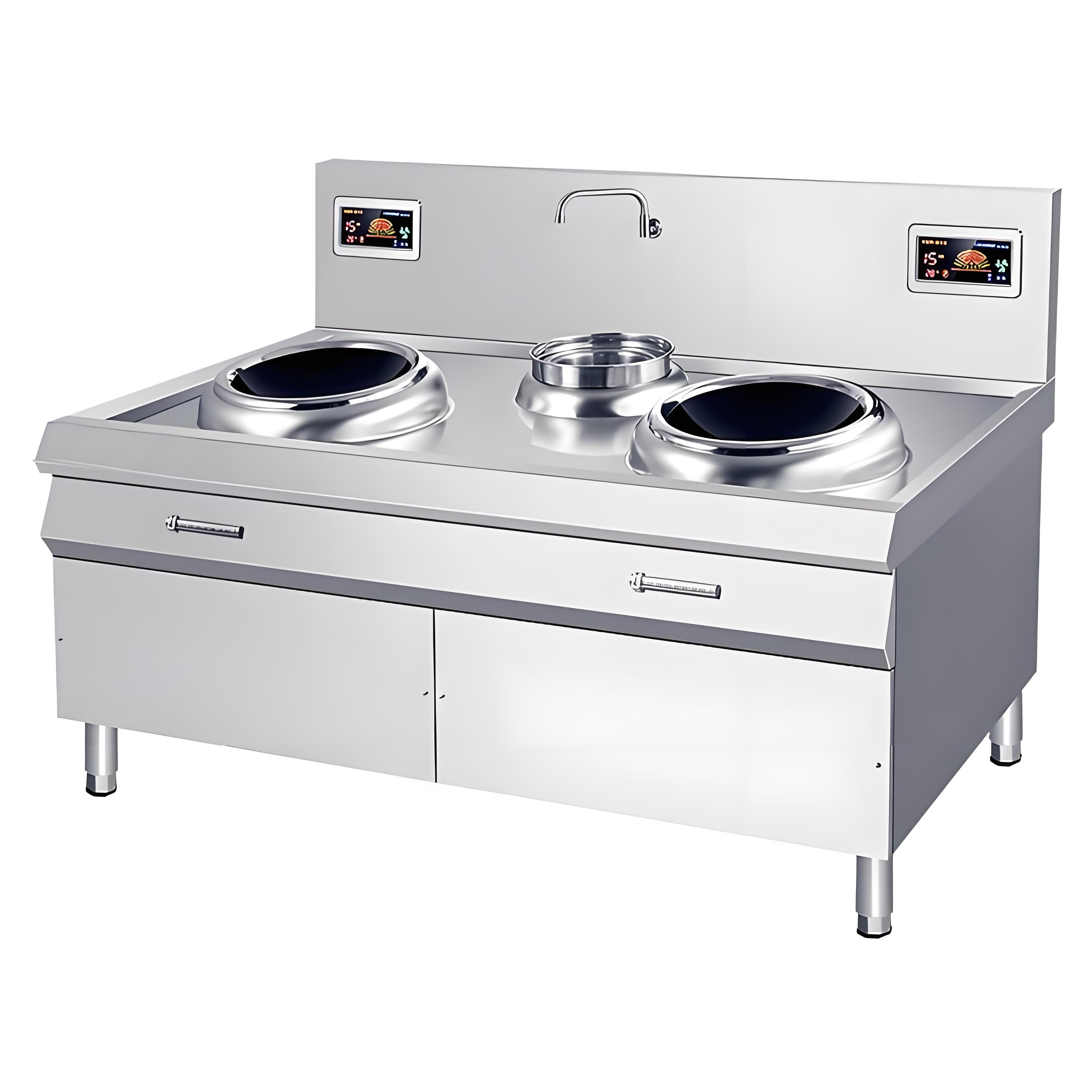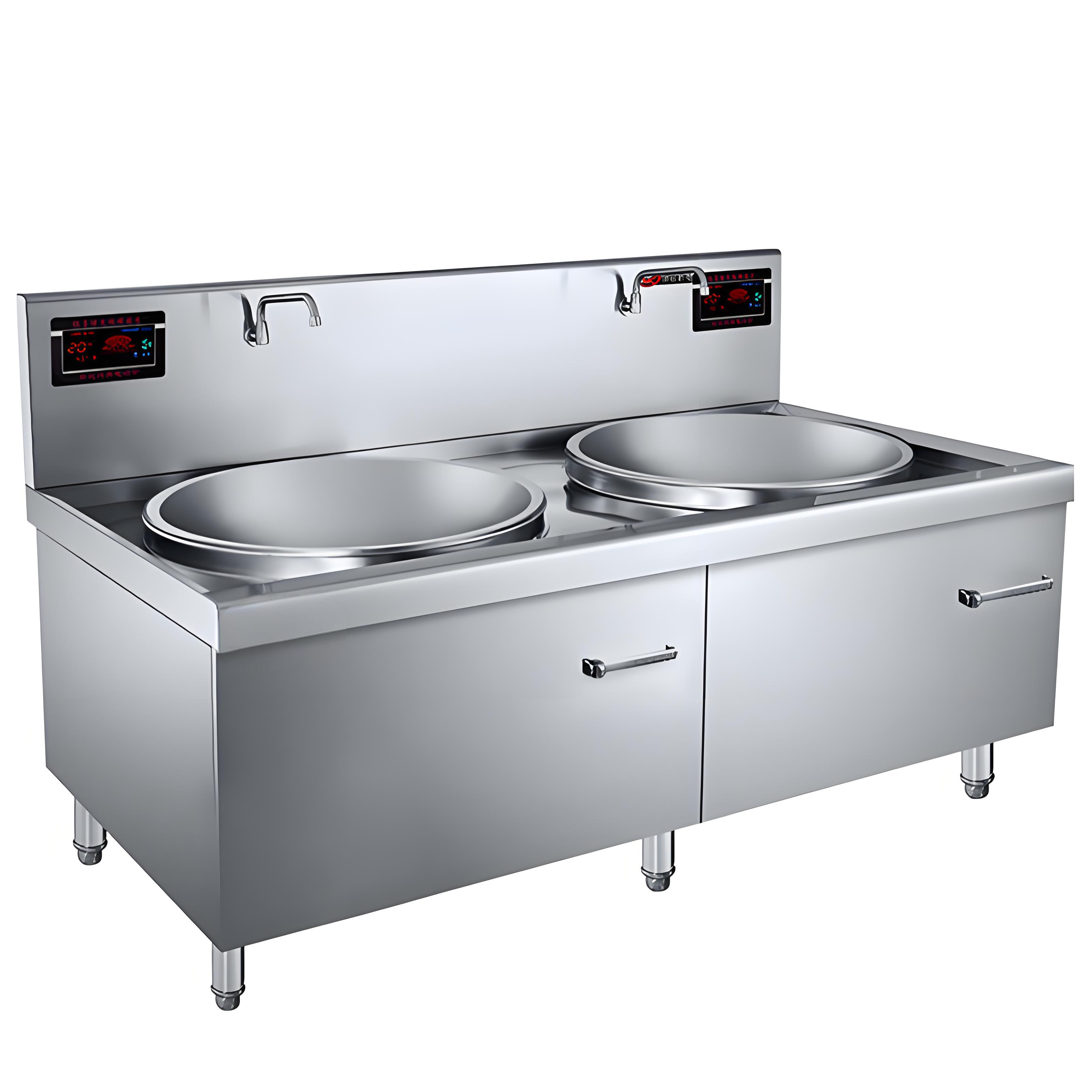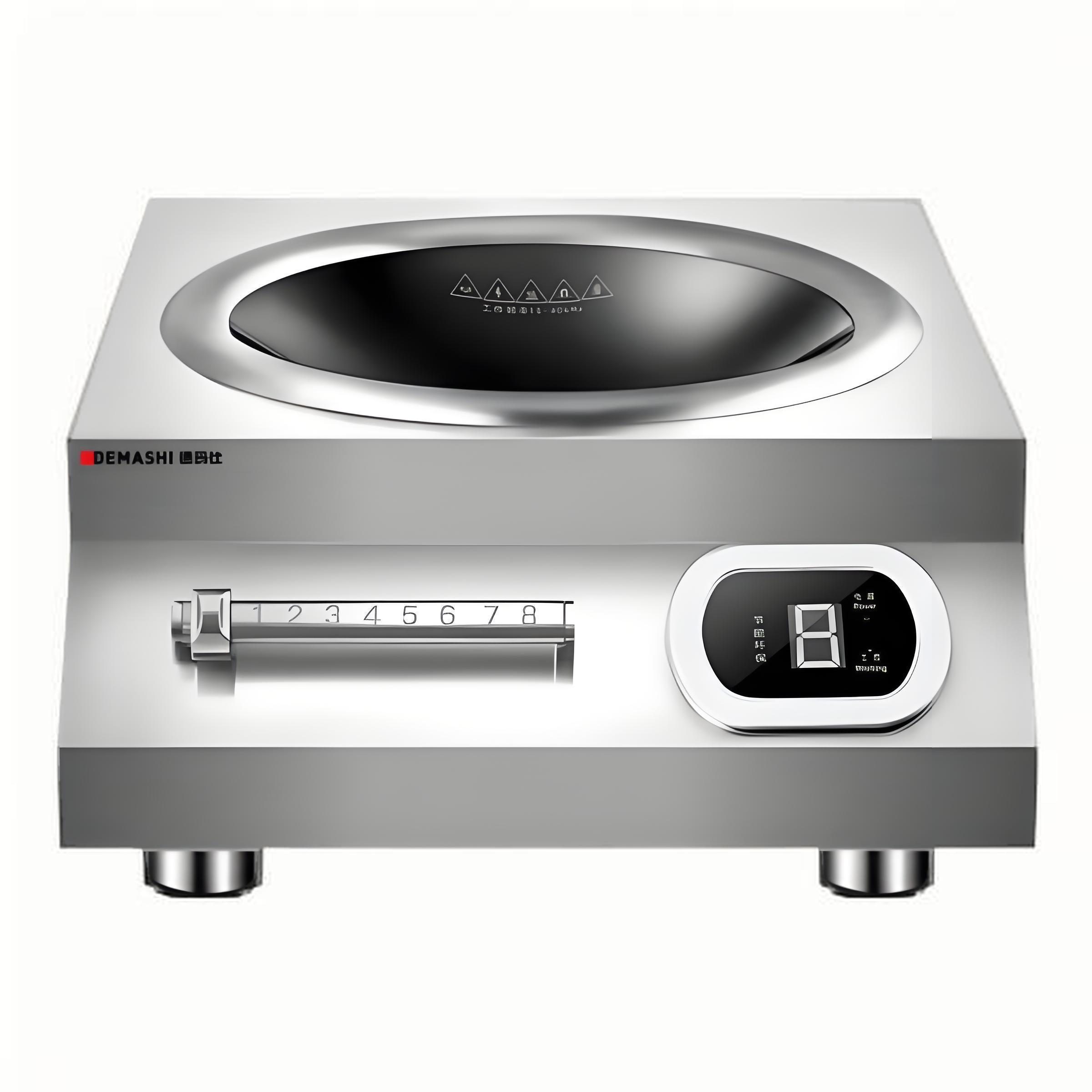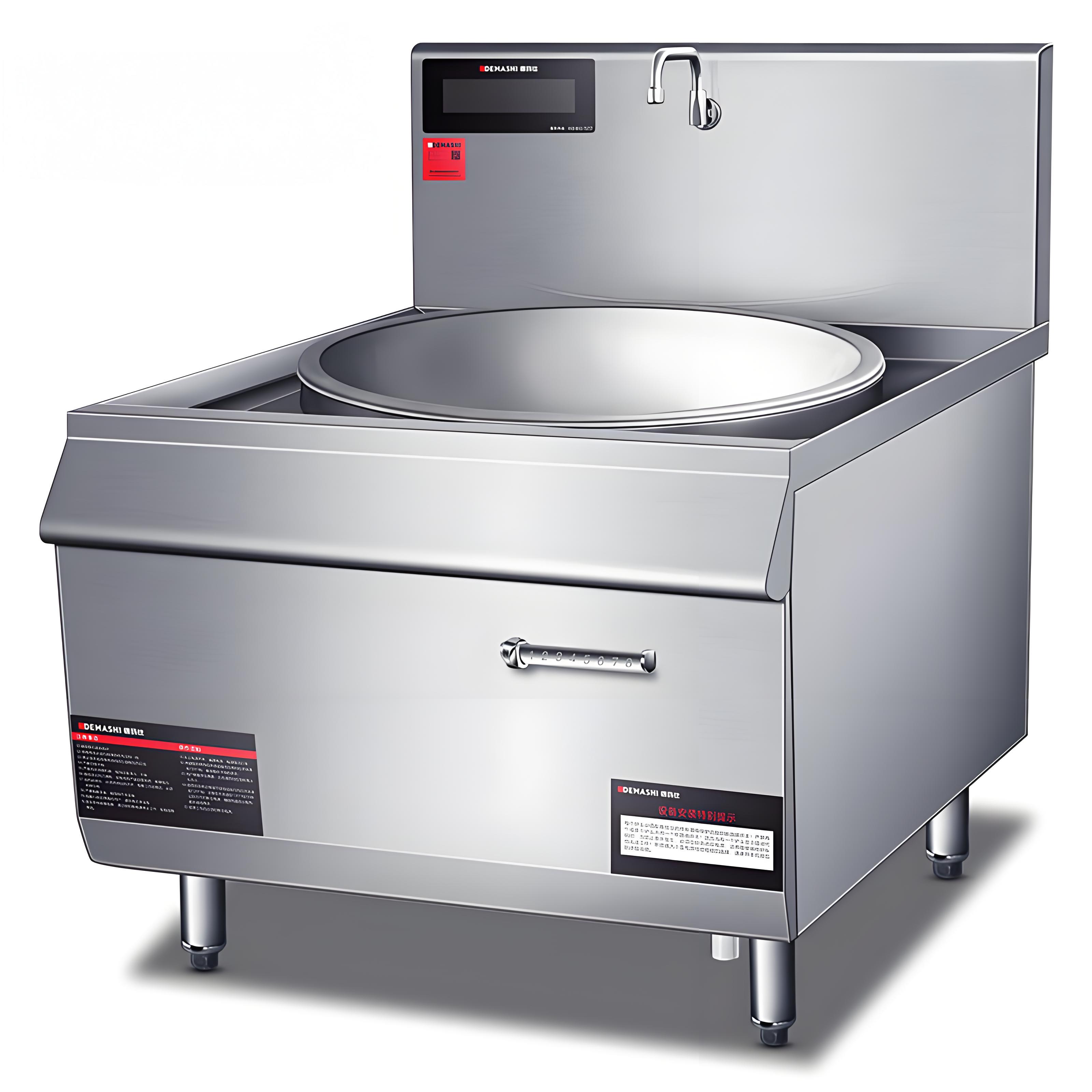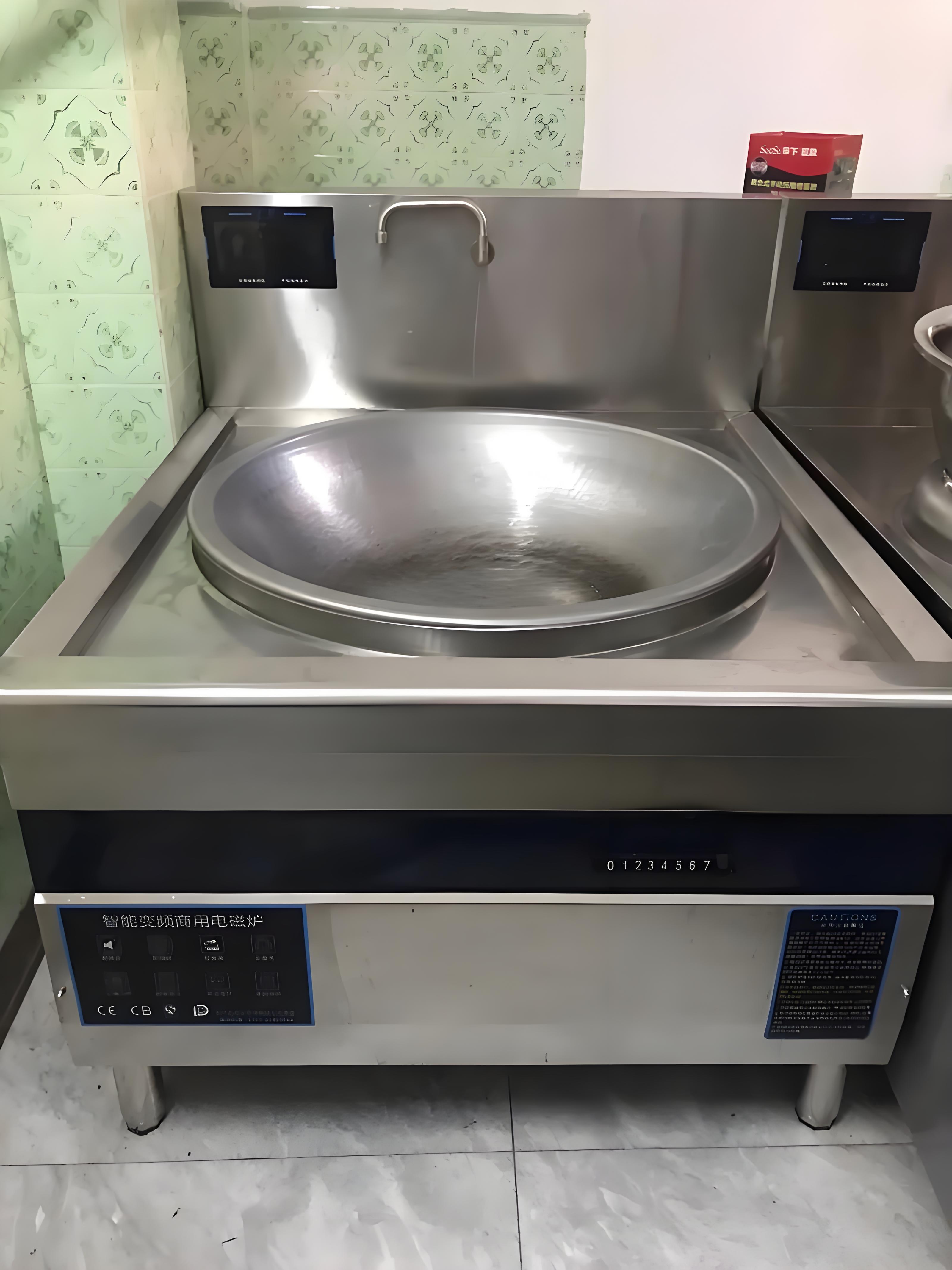As someone who’s been immersed in the world of commercial kitchen equipment for over a decade, I’ve seen trends come and go, but one shift stands out: the growing adoption of commercial induction cooktops in large canteens, from university dining halls to corporate cafeterias. A question I often hear is whether these sleek, high-tech appliances are truly more environmentally friendly than traditional gas or electric stoves. It’s a valid concern, especially as sustainability becomes a priority for institutions feeding hundreds or thousands daily. In this article, I’ll unpack the environmental impact of induction cooktops, share insights from my work with canteens, and help you weigh their green credentials. Let’s get cooking.
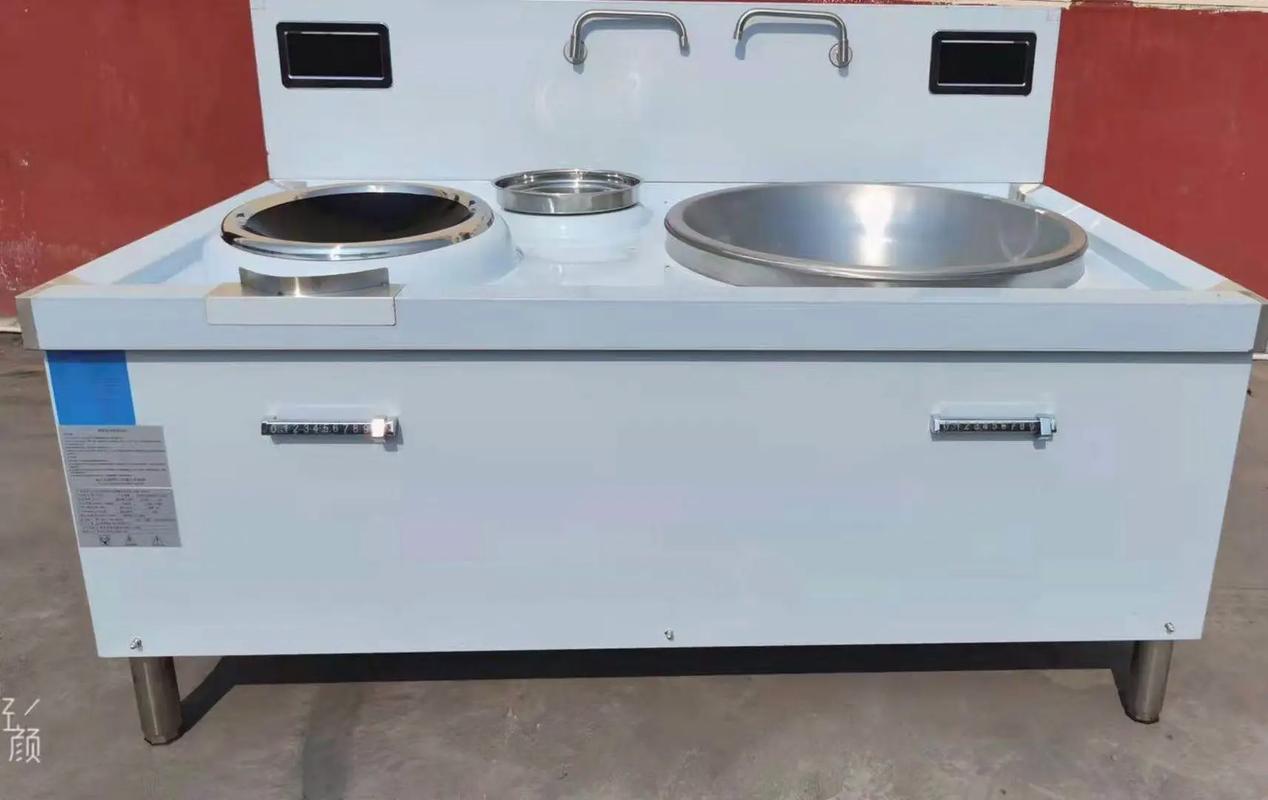
Understanding Commercial Induction Cooktops
Before diving into the eco-friendliness of induction cooktops, let’s clarify what they are. Unlike gas burners or traditional electric stoves, induction cooktops use electromagnetic fields to heat cookware directly. A copper coil beneath a glass-ceramic surface generates a magnetic field, inducing heat in compatible pots and pans (those made of magnetic materials like cast iron or stainless steel). This process is highly efficient, producing instant, precise heat without open flames or hot coils.
I recall visiting a university canteen a few years ago, where the head chef showed me their new induction setup. “It’s a game-changer,” she said, flipping a dial to adjust the heat instantly. “No more waiting for burners to warm up, and the kitchen stays cooler.” That efficiency and comfort hint at why induction is gaining traction, but does it translate to a smaller environmental footprint? Let’s break it down.
Why Induction Cooktops Are Considered Eco-Friendly
Large canteens face unique challenges: high energy consumption, constant cooking, and pressure to meet sustainability goals. Here’s why induction cooktops are increasingly seen as a greener choice, based on my experience and industry data.
1. Superior Energy Efficiency
Energy use is a major environmental concern for canteens, where stoves run for hours to serve thousands of meals. Induction cooktops are exceptionally energy-efficient, converting up to 90% of energy into heat for cooking, compared to gas (around 40%) or traditional electric (60-70%). Less wasted energy means a lower carbon footprint, especially when paired with renewable electricity sources.
I worked with a corporate canteen that switched to induction and saw their energy bills drop by 25% within six months. More importantly, their annual CO2 emissions decreased by nearly a ton, a win for their sustainability reports and the planet.
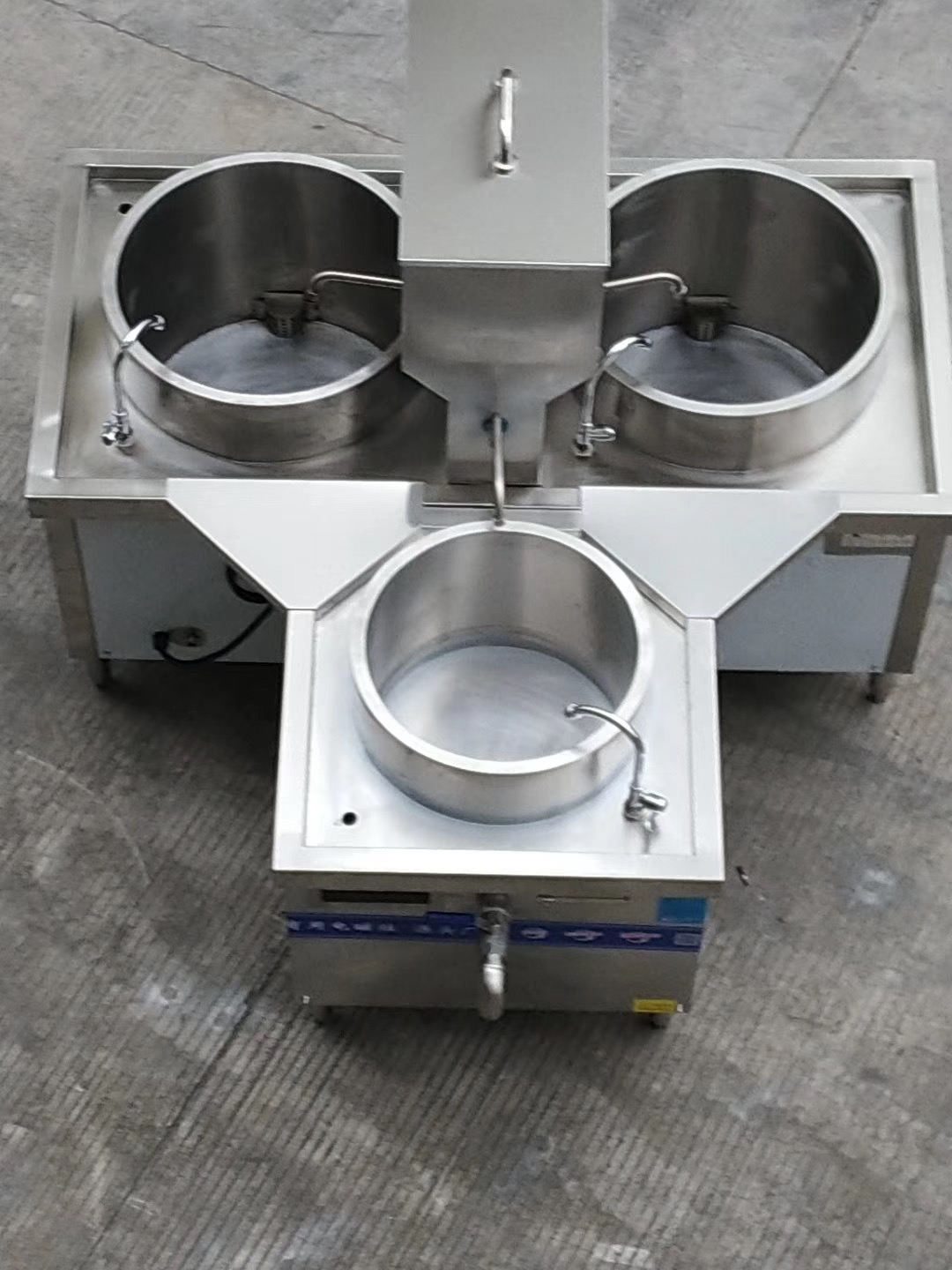
2. Reduced Greenhouse Gas Emissions
Gas stoves rely on fossil fuels, releasing carbon dioxide (CO2), methane, and other greenhouse gases during combustion. Induction cooktops, powered by electricity, produce zero direct emissions in the kitchen. If the electricity comes from renewable sources like solar or wind, the environmental impact shrinks even further.
A community college I advised was under pressure to meet local emissions targets. By replacing gas stoves with induction units and sourcing greener electricity, they cut their kitchen’s direct emissions to near zero. It was a proud moment for the facilities team, who celebrated with a “green kitchen” event for students.
3. Minimal Heat Waste
Gas and electric stoves radiate heat into the kitchen, forcing air conditioning systems to work harder to keep the space comfortable. Induction cooktops generate minimal ambient heat, as the cookware itself is heated directly. This reduces the energy needed for cooling, a significant factor in large, busy canteens.
I visited a hospital canteen last year where the staff raved about their induction setup. “The kitchen used to feel like an oven,” one cook told me. “Now, we’re not cranking the AC all day.” That reduction in cooling demand translates to lower energy use and fewer emissions.

4. Cleaner Indoor Air
Gas combustion produces pollutants like nitrogen dioxide (NO2) and carbon monoxide (CO), which can degrade indoor air quality and pose health risks for kitchen staff. Induction cooktops eliminate these byproducts, creating a healthier work environment. Cleaner air also means less need for heavy-duty ventilation systems, which consume significant energy.
In a project with a school district, we installed induction cooktops in several canteens. The staff noticed fewer headaches and respiratory issues, and the ventilation system’s energy use dropped by 15%. It was a reminder that eco-friendly choices often benefit people as much as the planet.
5. Alignment with Sustainability Goals
Many institutions, from universities to government facilities, have net-zero targets or sustainability mandates. Induction cooktops support these goals by reducing energy waste and emissions. They also project a modern, eco-conscious image, which resonates with stakeholders like students or employees.
A tech company I consulted for highlighted their induction-equipped canteen in their annual ESG (Environmental, Social, Governance) report. It wasn’t just about numbers—it signaled their commitment to a greener future, earning praise from environmentally savvy employees.
Comparing Environmental Impacts: Induction vs. Gas vs. Electric
To put things in perspective, here’s a table comparing the environmental aspects of induction, gas, and traditional electric cooktops in large canteens:
| Aspect | Induction | Gas | Electric | Greenest Choice |
|---|---|---|---|---|
| Energy Efficiency | ~90% energy-to-heat conversion | ~40% efficiency, high waste | ~60-70% efficiency | Induction, especially with renewables |
| Emissions | Zero direct emissions, depends on grid | CO2, methane, NO2 from combustion | No direct emissions, grid-dependent | Induction with clean energy |
| Heat Waste | Minimal, reduces cooling needs | High, increases AC demand | Moderate, some heat loss | Induction for cooler kitchens |
| Air Quality | No combustion byproducts | Produces NO2, CO, requires ventilation | No byproducts, but heat impacts air | Induction for healthier air |
This table highlights induction’s edge in efficiency, emissions, and air quality, though its eco-friendliness depends partly on the electricity source, which I’ll address next.
Challenges to Induction’s Eco-Friendliness
While induction cooktops have clear environmental advantages, they’re not a silver bullet. Here are some considerations I’ve encountered in my work:
Electricity Source Matters: Induction’s green credentials hinge on the energy grid. In regions reliant on coal or oil, the indirect emissions from electricity generation can offset some benefits. However, as grids shift to renewables (e.g., solar, wind), induction becomes increasingly eco-friendly. I advised a canteen in a coal-heavy region to pair their induction upgrade with a renewable energy contract, which maximized their environmental gains.
Manufacturing Impact: Producing induction cooktops involves mining rare earth metals for components like copper coils and electronics, which has an environmental cost. However, this is a one-time impact, and the long lifespan of commercial units (7-10 years or more) mitigates it. Gas stoves, by contrast, rely on ongoing fossil fuel extraction, which has a larger cumulative footprint.
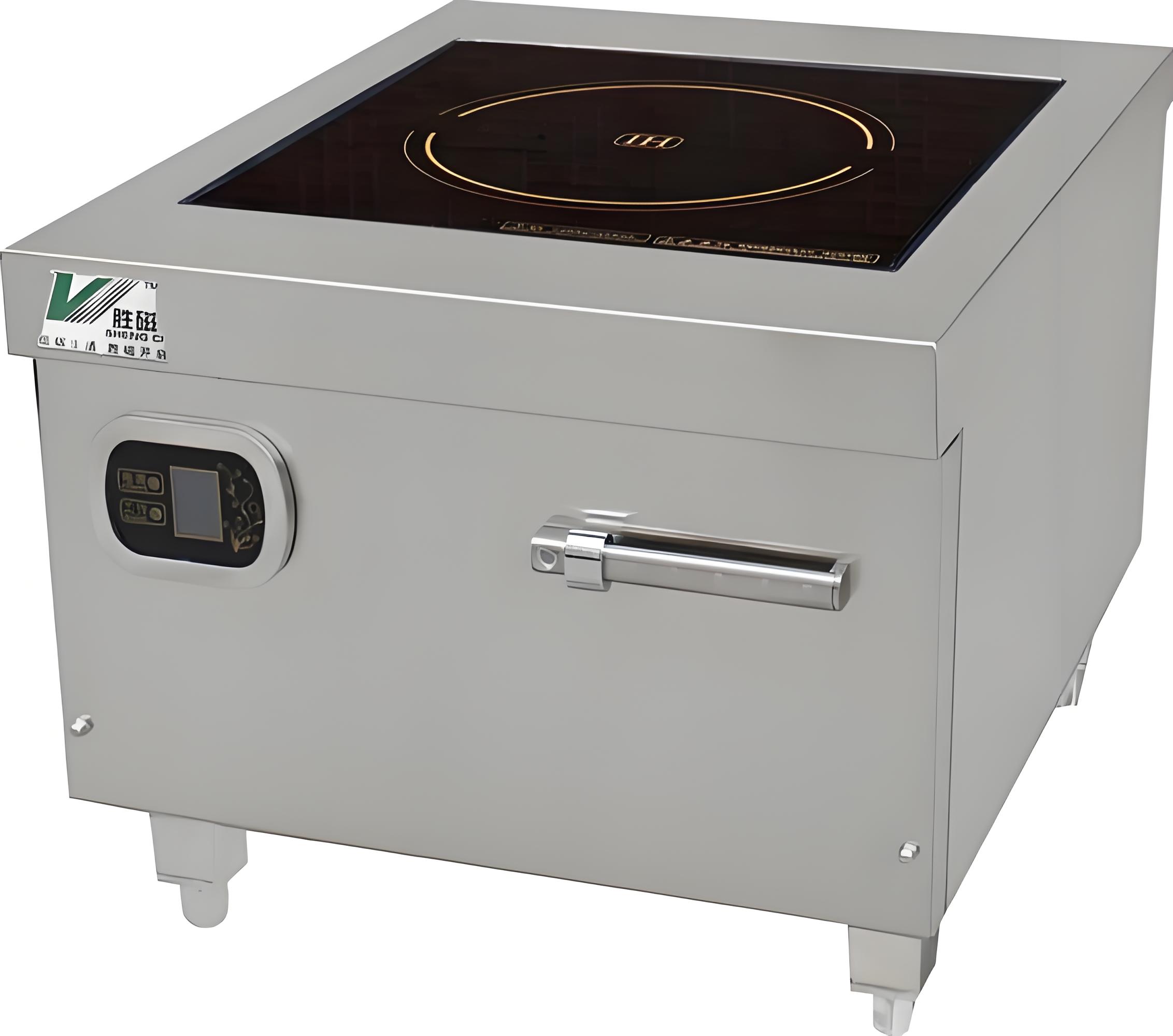
Upfront Costs and Infrastructure: Induction cooktops are more expensive upfront, often costing thousands more than gas or electric models. They also require robust electrical systems, and older canteens may need costly upgrades. I worked with a municipal canteen that delayed their switch due to wiring costs, though grants for green initiatives eventually covered the expense.
Cookware Compatibility: Induction requires magnetic cookware, and replacing non-compatible pots and pans adds to the environmental and financial cost. A university canteen I assisted had to phase in new cookware over a year to manage the transition smoothly.
Despite these challenges, the long-term environmental benefits of induction—lower energy use, zero direct emissions, and reduced heat waste—often outweigh the drawbacks, especially for canteens committed to sustainability.
Real-World Examples in Large Canteens
To ground this in reality, here are some ways induction cooktops are making a difference in large canteens, based on projects I’ve seen or advised on:
1. University Dining Halls
Universities with thousands of students prioritize efficiency and sustainability. Induction cooktops streamline high-volume cooking while cutting energy use. A state university I worked with installed induction units in their main dining hall, reducing their carbon footprint by 1.5 tons annually and earning accolades from their eco-conscious student body.

2. Corporate Cafeterias
Tech companies and large corporations use induction to align with green initiatives. A Silicon Valley firm I consulted for switched to induction, pairing it with solar panels. Their cafeteria became a showcase for sustainability, and employees loved the modern, clean kitchen vibe.
3. Hospital Food Services
Hospitals need reliable, hygienic kitchens. Induction’s easy-to-clean surfaces and cooler operation make it ideal. A regional hospital’s canteen reported a 20% drop in energy costs after adopting induction, freeing up funds for patient care.
4. Government and Military Facilities
Large-scale canteens in government or military settings benefit from induction’s durability and efficiency. A military base I visited used portable induction units for field kitchens, reducing fuel transport needs and emissions in remote locations.
Tips for Adopting Induction in a Canteen
If you’re considering induction for a large canteen, here’s my practical advice, drawn from years of helping kitchens make the switch:
Evaluate Your Grid: Check your local electricity mix. If renewables are limited, explore green energy contracts or offset programs to maximize induction’s eco-benefits.
Budget for the Transition: Factor in upfront costs for units, electrical upgrades, and cookware. Look for government grants or energy efficiency rebates—I’ve seen clients cover 30-50% of costs this way.
Choose Reliable Models: Opt for brands like Vollrath, Hatco, or CookTek, known for durable, high-performance units. Ensure the cooktop matches your menu, e.g., high-power models for boiling or wok-specific units for stir-frying.
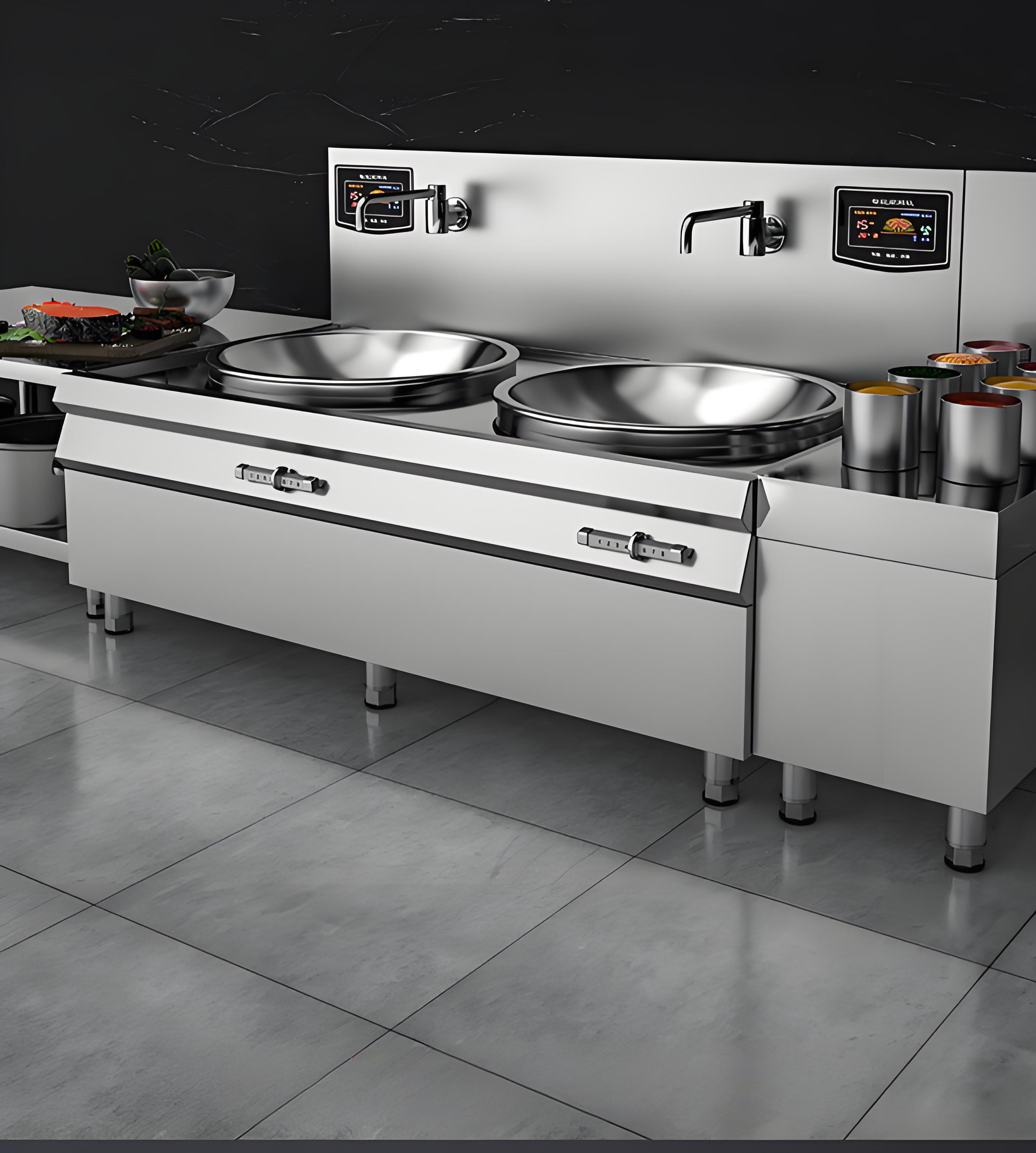
Train Your Staff: Induction is intuitive but different from gas. Provide training on cookware use and cleaning to ensure smooth adoption. I once saw a canteen struggle because staff weren’t taught how to maintain the glass-ceramic surface properly.
Start Small: If costs are a concern, pilot induction in one section (e.g., sauté stations) before a full overhaul. A community college canteen I advised started with two units, then scaled up after seeing the savings.
When I helped a mid-sized corporate canteen transition, we spent time testing models and training staff. The result? A 30% reduction in energy use and a happier, cooler kitchen team.
The Future of Eco-Friendly Canteen Cooking
The rise of induction cooktops reflects a broader shift toward sustainable commercial kitchens. As renewable energy becomes more accessible, induction’s environmental edge will grow. Innovations like smart induction systems, which optimize energy use through AI, are already on the horizon. I saw a prototype at a trade show that adjusted power based on cookware size—small but meaningful efficiency gains.
Meanwhile, manufacturers are exploring greener production methods, like using recycled materials for components. These advances will further reduce induction’s lifecycle impact. I’m optimistic that within a few years, induction will be the default for eco-conscious canteens, just as gas once was for traditional kitchens.
Wrapping Up
So, are commercial induction cooktops more eco-friendly for large canteens? The answer is a resounding yes, thanks to their high energy efficiency, zero direct emissions, minimal heat waste, and cleaner air. While challenges like upfront costs, grid dependency, and cookware needs exist, the long-term benefits—lower environmental impact, cost savings, and healthier workplaces—make induction a smart choice for canteens aiming to go green.
Having worked with kitchens striving for sustainability, I’ve seen how equipment choices can drive meaningful change. Induction isn’t just about cooking; it’s about building a future where efficiency and environmental responsibility go hand in hand. If you’re running a canteen or planning an upgrade, induction is worth serious consideration.
Have questions about induction or want tips for a greener kitchen? Drop a comment—I’d love to help!
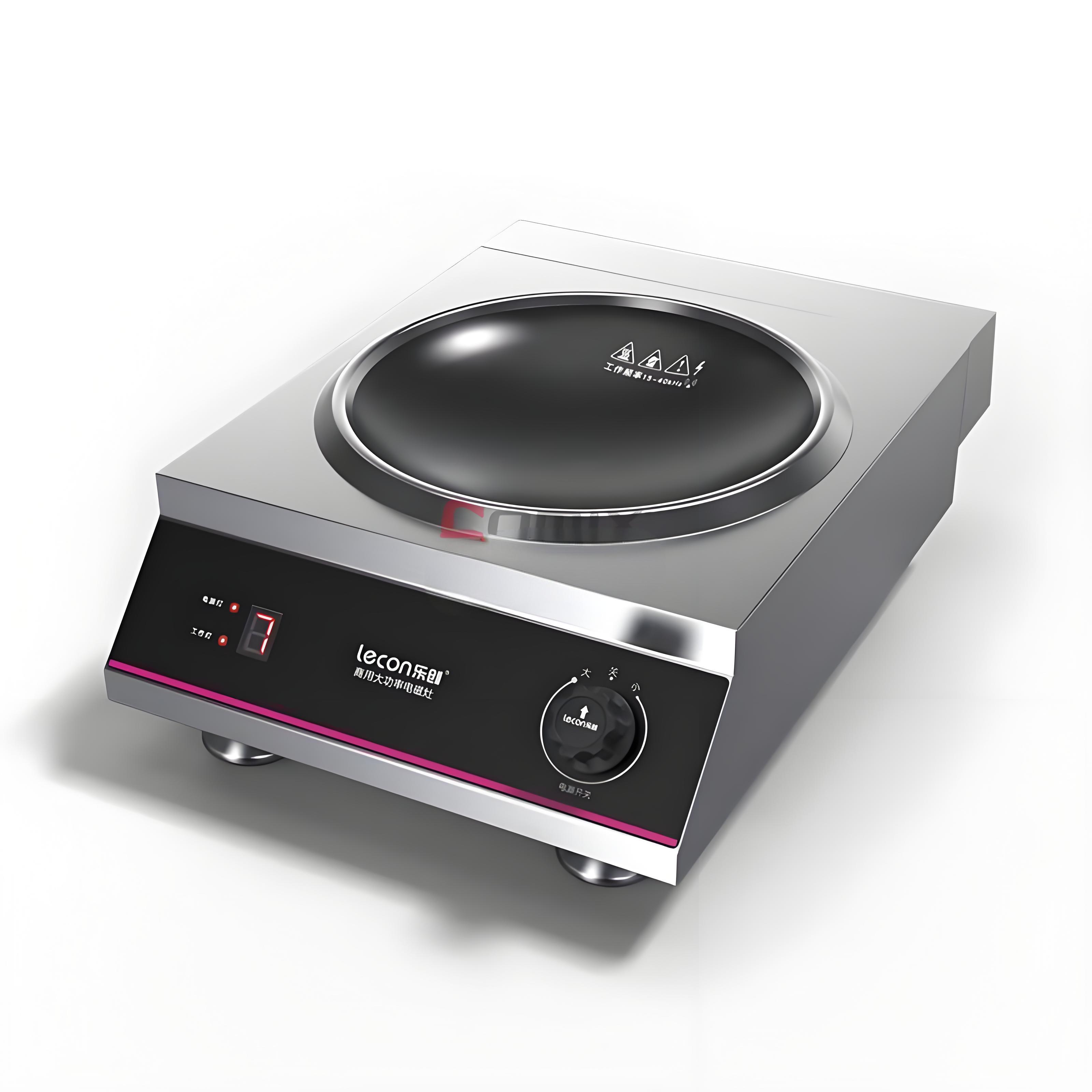
Related Questions
Q: Do induction cooktops use more electricity than gas stoves?
A: Induction uses electricity efficiently (up to 90% energy-to-heat), often costing less to run than gas, which wastes ~60% of energy. Actual costs depend on local rates, but induction typically saves money over time.
Q: Are induction cooktops safe for the environment?
A: Yes, they produce no direct emissions and use less energy than gas or electric stoves. Their eco-friendliness depends on the electricity source, with renewables maximizing benefits.
Q: Can existing kitchen staff adapt to induction easily?
A: Most staff adapt quickly with basic training, especially on cookware use and cleaning. Induction’s intuitive controls make the transition smoother than expected.
Q: What’s the environmental impact of replacing cookware for induction?
A: Replacing non-magnetic cookware has a one-time environmental cost (e.g., manufacturing new pans). However, induction’s long-term energy savings and lower emissions outweigh this impact.
Q: Are there grants for canteens to switch to induction?
A: Many regions offer energy efficiency grants or rebates for eco-friendly upgrades. Check with local governments or utilities—I’ve seen canteens offset 30-50% of costs this way.
